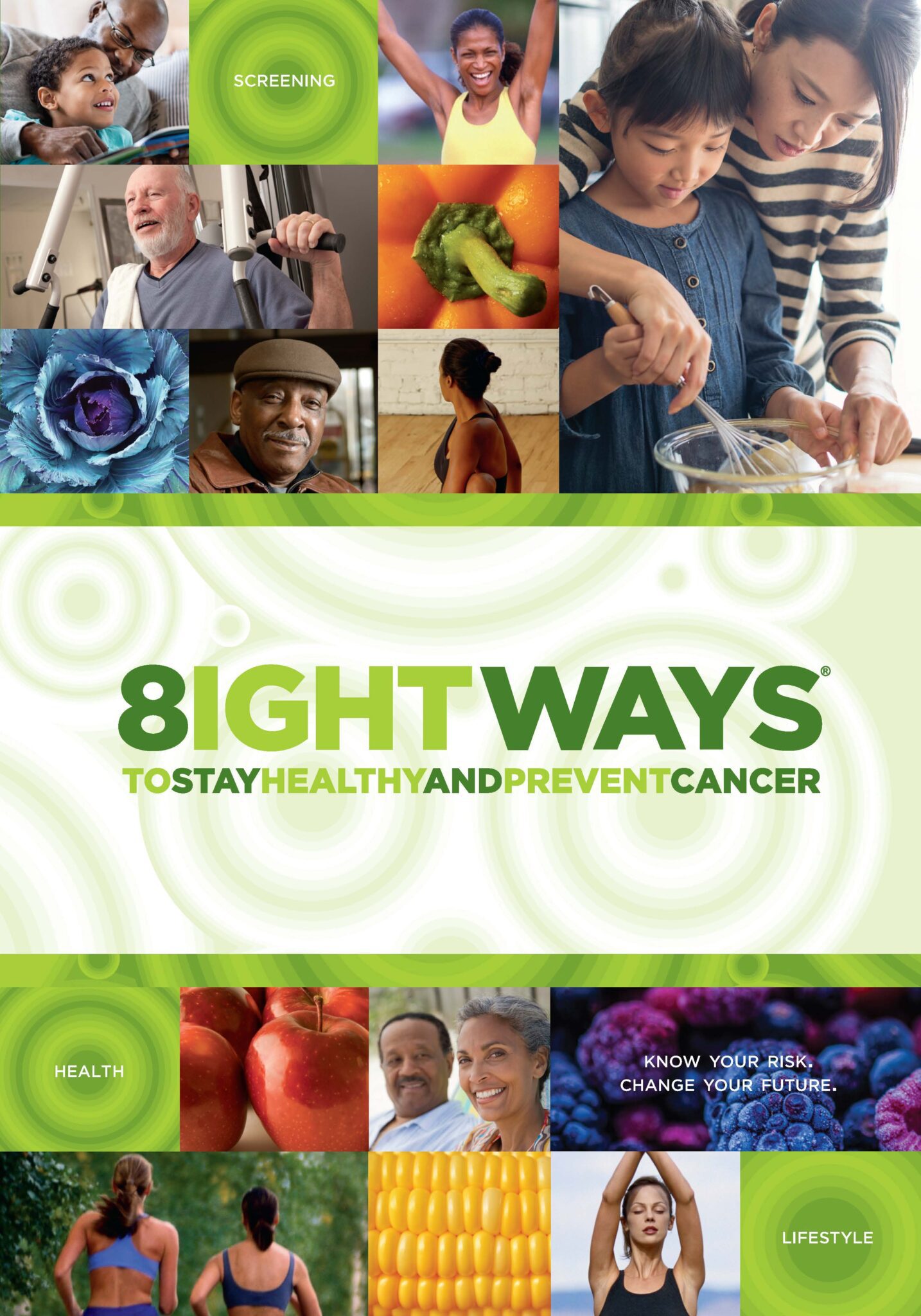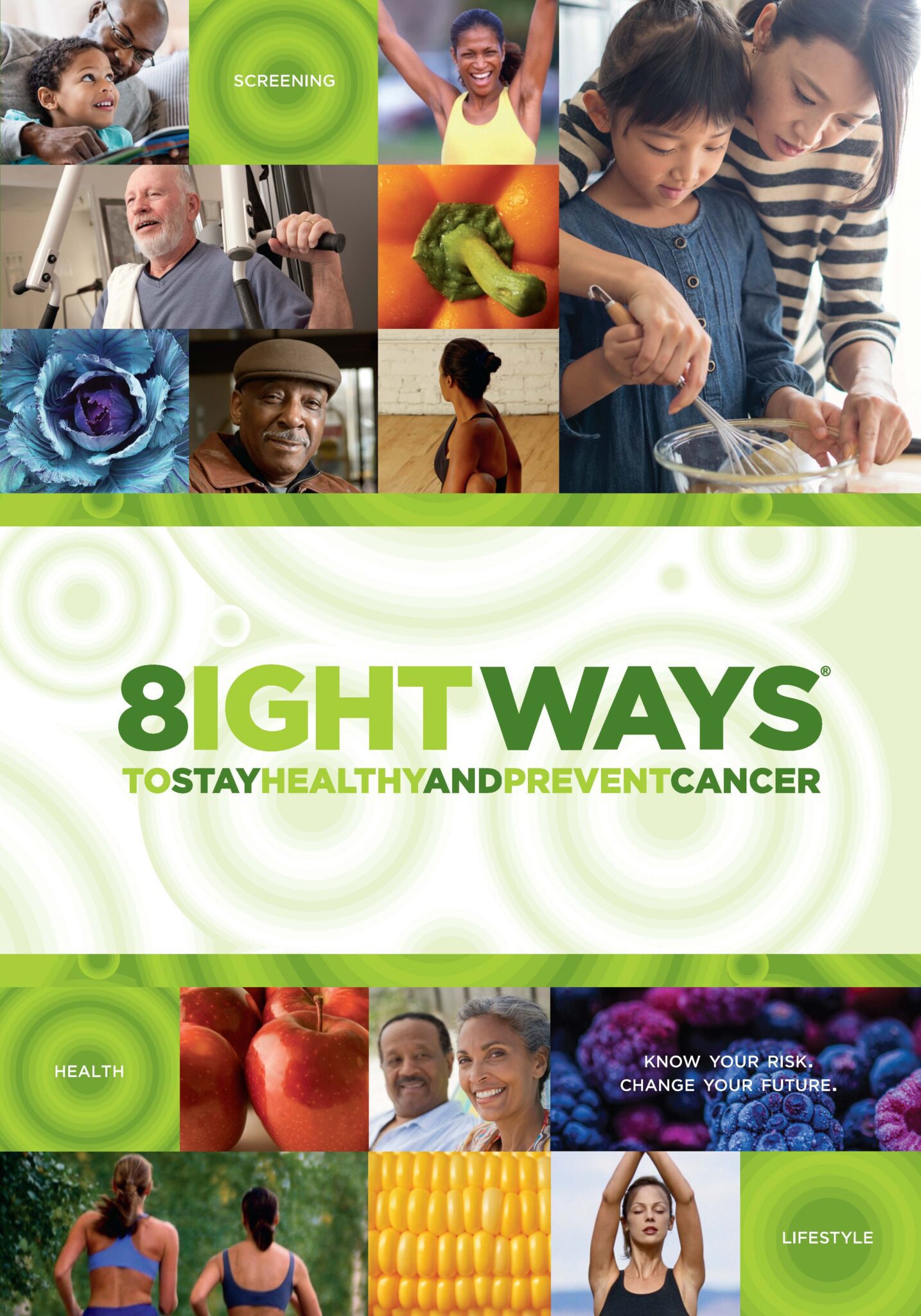Cancer will inevitably impact the lives of nearly everyone in some way during their lifetime. Astonishingly, statistics show that one out of every two women and one out of every three men will receive a cancer diagnosis at some point in their lives.
8 Ways You Can Reduce Your Risk for Cancer
The single best thing you can do for your health and the health of your loved ones is to stop using tobacco. Tobacco use accounts for about 30% of all cancer deaths in the U.S. and increases your risk for many cancers, including lung, esophageal and bladder cancers.
Quitting smoking at any age (this includes cigarettes, cigars, smokeless tobacco and e-cigarettes/vapes) reduces your risk for cancer, heart disease and stroke, improves your quality of life and can even help you live long. It can be especially important if you’ve been diagnosed with cancer.
“Smoking can also interfere with wound healing for surgical patients, cause weight loss and increase the risk for secondary cancers like lung cancer, for example in women diagnosed with breast cancer,” said Santosh K. Rao, MD, a medical oncologist with Banner MD Anderson Cancer Center at Banner Gateway Medical Center, in Gilbert, AZ.
2. Move more.
Studies have shown that exercise reduces your risk for many types of cancer.
“Some of this is due to reduced obesity and improved energy balance, but there are also hormonal effects, including lowering insulin resistance,” Dr. Rao said. “Obesity and a sedentary lifestyle increases your risk for many cancers, including breast cancer in postmenopausal women, colon, esophageal, endometrial cancers and many others.”
You should aim for at least 150 minutes of moderate intensity exercise each week or 75 minutes of vigorous intensity exercise per week. When doing moderate exercise, you can talk, but not sing. When doing vigorous exercise, you can say only a few words.
Banner MD Anderson, The World Health Organization (WHO) and the American Institute of Cancer Research recommend eating a plant-based diet to reduce your risk for cancer. Make one third of every meal whole grains, vegetables, fruits, beans, nuts and seeds, as these are packed with nutrients and phytochemicals that reduce your risk for diseases like cancer. Fill the remaining one third with plant-based protein like tofu, beans and quinoa.
“We like to focus on cruciferous vegetables like broccoli, brussels sprouts, kale and cauliflower,” Dr. Rao said. “And there is some evidence for green tea being helpful in preventing some cancers.”
Limit added sugar, processed foods.
In addition to staying active and eating a healthy diet, maintaining a healthy weight is another important way to reduce your cancer risk. Being overweight or obese increases your risk for certain cancers, including uterine, colorectal and post-menopausal breast cancer.
Alcohol is linked to oral, throat, liver, colon, esophageal and breast cancers. For cancer prevention, it’s best not to drink any alcohol.
Skin cancer is the most common type of cancer diagnosed, and being out in the sun, using tanning beds and sunlamps are contributing factors.
“We’re exposed to more UV radiation with environmental changes happening in the world, specifically less protection from the ozone layer,” Dr. Rao said. “The UV rays can actually change the DNA in cells, leading to cancerous skin growths.”
Stay in the shade between 10 a.m. and 4 p.m. If you do go out in the sun (whether it’s winter or summer), always apply sunscreen to your skin that is least sun protection factor (SPF) 30, is water resistant and broad spectrum. Also wear protective clothing, a wide-brimmed hat and sunglasses.
Be sure to visit your health care provider regularly and get the appropriate health screenings for your age and risk factors. Banner MD Anderson has these recommendations for people at average risk:
From age 45, get a colonoscopy every 10 years, or a virtual colonoscopy every five years. Another option is a stool-based test, which can be done annually or every three years depending on the test.
Women should get a mammogram every year starting at age 40.
Women should get a Pap test every three years from age 21, and get an HPV test, with or without a Pap test, every five years from age 30.
Approximately 5-10% of cancers have a hereditary component. While you cannot alter your family’s medical background, it is crucial to have discussions with your family members about their medical history. This will enable you to engage in meaningful conversations with your doctor and gain a better understanding of your individual risk for cancer.
Key Points
By adhering to these nine steps, you can not only minimize your chances of developing cancer but also enhance your overall well-being, promoting a healthier lifestyle.




